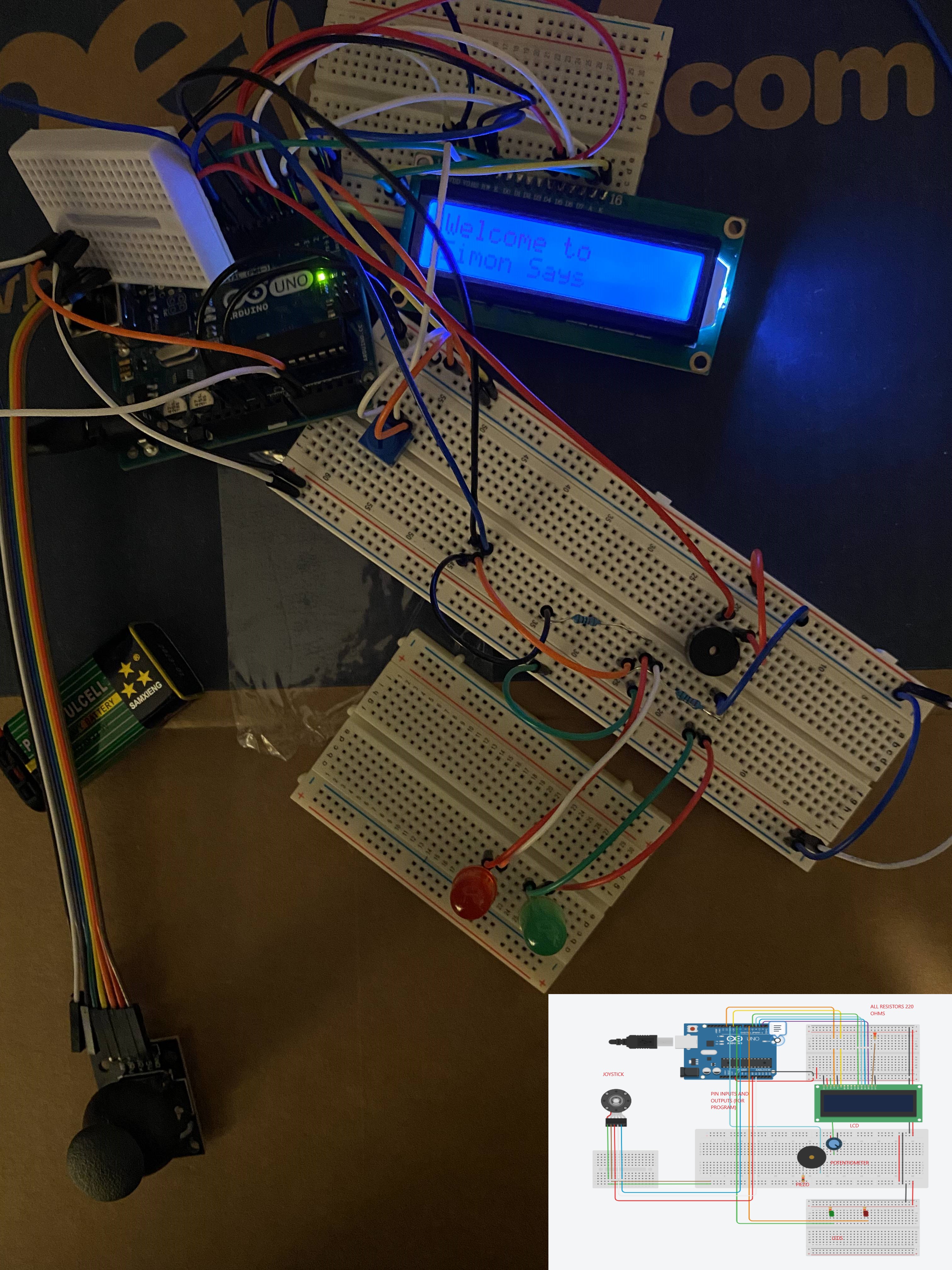Simon Says

Description as a Tweet:
Have you ever wanted to play Simon Says in a box? Now you can! Through the power of random number generation and electrical doodads, Simon Says can be brought into your very own home!
Inspiration:
Our collective childhood playing the life-changing game Simon Says
What it does:
Our project is Simon Says built on an Arduino. An LCD displays a direction and also whether or not Simon says to move in that direction. After comparing two values--a randomly generated direction and the user input direction--the device either lights up a green LED or red LED-based on whether the user is correct or incorrect and also plays a tone from the piezo buzzer. The user wins by having 10 successful moves, and when they're incorrect a sound plays from the buzzer that tells them that they were incorrect and asks them to try again. The game ends when the user either wins or chooses not to try again. Upon winning a victory message displayed along with a victory song.
How we built it:
To create the Simon says we combined the knowledge of our groupmates to design a system that takes analog inputs and compares them to randomly generated directions. We started with a joystick, which through the analog input displays a set of integers, each from 0 to 1024. Knowing which direction applied to each integer we established a range of data that would be acceptable to be defined as a direction since analog input is not identical across different inputs. All aspects used the digital pins on the Arduino except the analog stick.
Technologies we used:
- C/C++/C#
- Arduino
- Microcontrollers
- Other Hardware
- Misc
Challenges we ran into:
One challenge we faced was converting the analog input from the joystick into a data type that could be used for comparison with the randomly generated direction picked by Simon. Making the sound effects with the Piezo was also quite difficult; creating a new noise for each condition was time-consuming and took creativity. We also had trouble fitting our design into an enclosure at the end, but this was mostly because we didn't want to solder and make it more permanent.
Accomplishments we're proud of:
The overall user-friendliness of the device, the buzzer, and the red and green glow-up lights are all parts of Simon's brain that we are proud of. The overall interaction with the user was very important when creating the game and we believe our methods of providing feedback to the user through lights, sounds and accomplished this.
What we've learned:
We learned how to integrate an LCD into an Arduino and how to interpret joystick inputs into an analog signal to a computer. Both were achieved specifically to assist in creating Simon's Brain, and both are used in the forefront of the design.
What's next:
Our next step is playtesting. We want to bring our technology to the world, happiness to the children, a gift for every family.
Built with:
To build Simon, we used an Arduino, a joystick, two LEDs (one red and one green), a Potentiometer, a Piezo, a Du Pont wire, an LCD monitor, and jumper wires as well as resistors and breadboards.
Prizes we're going for:
- Best Beginner Hardware Hack
- Funniest Hack
- Best Beginner Software Hack
Prizes Won
Team Members
Patrick Walsh
Samuel Almeida
